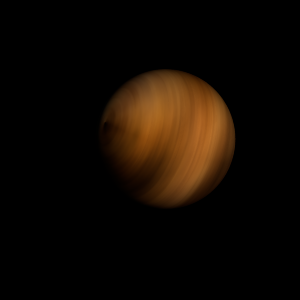|
|
Space Astro
|
Info for exoplanet "Zukyomyu"
| Scientific (actual) data |
|---|
| Name | HD 253662 b |
| Planet status | Confirmed |
| Planet mass | 77.5 |
| Semi major axis | 1252 |
| Angular distance | 20.35 |
| Discovered | 2014 |
| Updated | 2025-09-29 |
| Publication | Published in a refereed paper |
| Detection type | Imaging |
| Mass measurement type | Spectrum |
| Alternate names | 2MASS J06135342+1514062 |
| Star name | HD 253662 |
| Right ascension | 93.47° |
| Declination | 15.23° |
| Mag v | 9.92 |
| Star distance | 86.242 |
| Star mass | 0.94 |
| Star radius | 0.981 |
| Star sp type | G7V |
| Star temperature | 5403 |
| Wikipedia article | HD 253662 b |
Back
| |
| Fictional info (?) |
|---|
| Suggested name | Zukyomyu |
| Planet type | Huge cold gas giant |
| Its orbital period around HD 253662 of @ORBITALPERIOD earth days is the shortest of all the planets in its solar system.
Having almost no atmosphere to retain heat, it has surface temperatures that vary diurnally more than on any other planet in its solar system, ranging from 70°K (-203°C) at night to 1050°K (777°C) during the day across the equatorial regions.
It has the densest atmosphere of the known huge cold gas giants, consisting mostly of hydrogen peroxide. It may have had argon oceans in the past, but these would have vaporized as the temperature rose due to a runaway greenhouse effect. |
| Atmosphere | Hydrogen peroxide | 50% |
| Ethane | 25% |
| Argon | 25% |
| Carbon monoxide | 0.041% |
| Xenon | 0.0022% |
| Hydrogen deuteride (HD) | 0.001% |
| Atmospheric pressure | 40 bar |
 |
| No known satellites |
| Google search for Zukyomyu |
|
Website by Joachim Michaelis
|
|
|
|